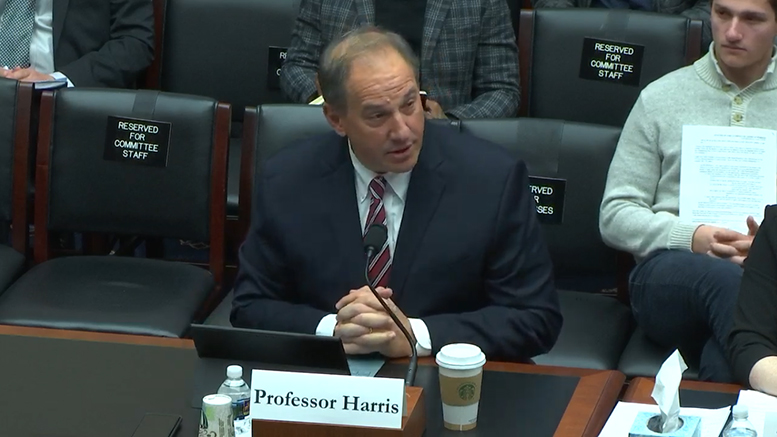The federally funded Trade Adjustment Assistance Community College and Career Training (TAACCCT) program may have expired last year, but it can serve as a model to help both workers and employers who are trying to navigate a rapidly changing economy.
During a House subcommittee hearing Wednesday on how Congress can address worker displacement by expanding access to lifelong learning, a former top-level U.S. Labor Department official noted that the TAACCCT program has provided a structure that can help workers and employers. Seth Harris, who served as U.S. deputy labor secretary and its chief operating officer — and also briefly as acting labor secretary — observed firsthand the successful partnerships the program created.
“Our experience with the TAACCCT program tells us that the availability of competitive grant funding can catalyze local and regional intermediaries to step forward and forge the partnerships that are necessary to help workers, employers and communities build successful workforce development programs,” said Harris, who is a visiting professor at Cornell University. “This committee should explore ways of re-creating this successful strategy.”
Such labor market intermediaries can help employers get organized to work with training providers so the providers can link curriculum to competencies and jobs, he said.
“The intermediary doesn’t have to be a community college president, although they are an excellent option,” he added.
The TAACCCT program was launched during the Obama administration to help unemployed and displaced workers affected by the recession. It distributed $2 billion over four years to 729 colleges and universities (including 630 community colleges) to work with employers and other stakeholders to train workers for in-demand jobs in their regions.
A national study of the program is still forthcoming, but several studies of TAACCCT show it worked. It helped to improve program completion, credential attainment and job outcomes for workers who completed those training programs, Harris said.
Several members of Congress are keenly aware of the effectiveness of the TAACCCT program. It serves as a model for a new $40 million community college-focused job training program included in a comprise federal funding package that the president is expected to sign this week. Run by DOL, the Strengthening Community Colleges Initiative aims to better align workforce development needs for in-demand industries with postsecondary education.
Include PLA
Harris also told the Higher Education and Workforce Subcommittee that colleges should credit workers for their work experiences. Such prior-learning assessments (PLA) can help workers more quickly attain occupational certificates and degrees, he said, noting that the TAACCCT program promoted PLA.
“Every federal education and training grant should,” he said in his testimony, adding that articulation agreements between education and training providers also should be the norm.
Several of the witnesses at Wednesday’s hearing noted that ensuring incumbent workers have an opportunity to upgrade their job skills is as important as serving unemployment or displaced workers. That includes helping them establish career pathways.
“Incumbent worker training is a major component of our state’s goals for preparing for the future of work,” said Nova Gattman, deputy director of external affairs at the Washington State Workforce Training and Education Coordinating Board.
Washington’s Job Skills Program, which provides dollar-for-dollar matching grants, is run through the State Board for Community and Technical Colleges and currently supports 39 projects. Food processor McCain Foods tapped the Job Skills Program to partner with Big Bend Community College to upskill more than 450 incumbent workers. It’s part of the company’s expansion, which will require workers to have more skills in math, science, communication, problem-solving, teamwork and customer service, Gattman said.
Currently, the program doesn’t have enough state funding to serve the number of employers applying to participate, she said.
More money and data
Several participants at the hearing called for more federal funding for job training. While the U.S. workforce has grown by roughly half over the past four decades, federal investment in workforce development has decreased by two-thirds, said Rep. Susan Davis (D-California), who chairs the subcommittee.
Aside from more federal money, a lack of workforce data and confusion regarding credentials are barriers to providing workers with better services to ensure they have jobs. Harris noted there are more than 730,000 credentials offered in the U.S., according to a Credential Engine report.
“No one can sort that out,” he said. “There’s no Yelp for credentials in the country.”
On apprenticeships
Apprenticeships came up during the hearing, but with fewer fireworks than at a House Education and Labor Committee hearing last month on apprenticeships. Several of the panelists expressed their support for registered apprenticeships over so-called industry-recognized apprenticeship programs (IRAPs), which would give employers more flexibility in designing and implementing apprenticeships using federal dollars.
Brad Markell, executive director of the AFL-CIO Working for America Institute, said he would like to see registered apprenticeships expand more into fields such as technology, healthcare and manufacturing.
Harris added that IRAPs would be unregulated and have no accountability, and that could water down and undermine successful registered apprenticeships.
Republicans, meanwhile, argued IRAPs would encourage more employers to participate in apprenticeships by allowing them to skip over bureaucratic red tape.
“After all, employers know what skills their employees need to excel in the workplace,” said Rep. Lloyd Smucker (R-Pennsylvania).

